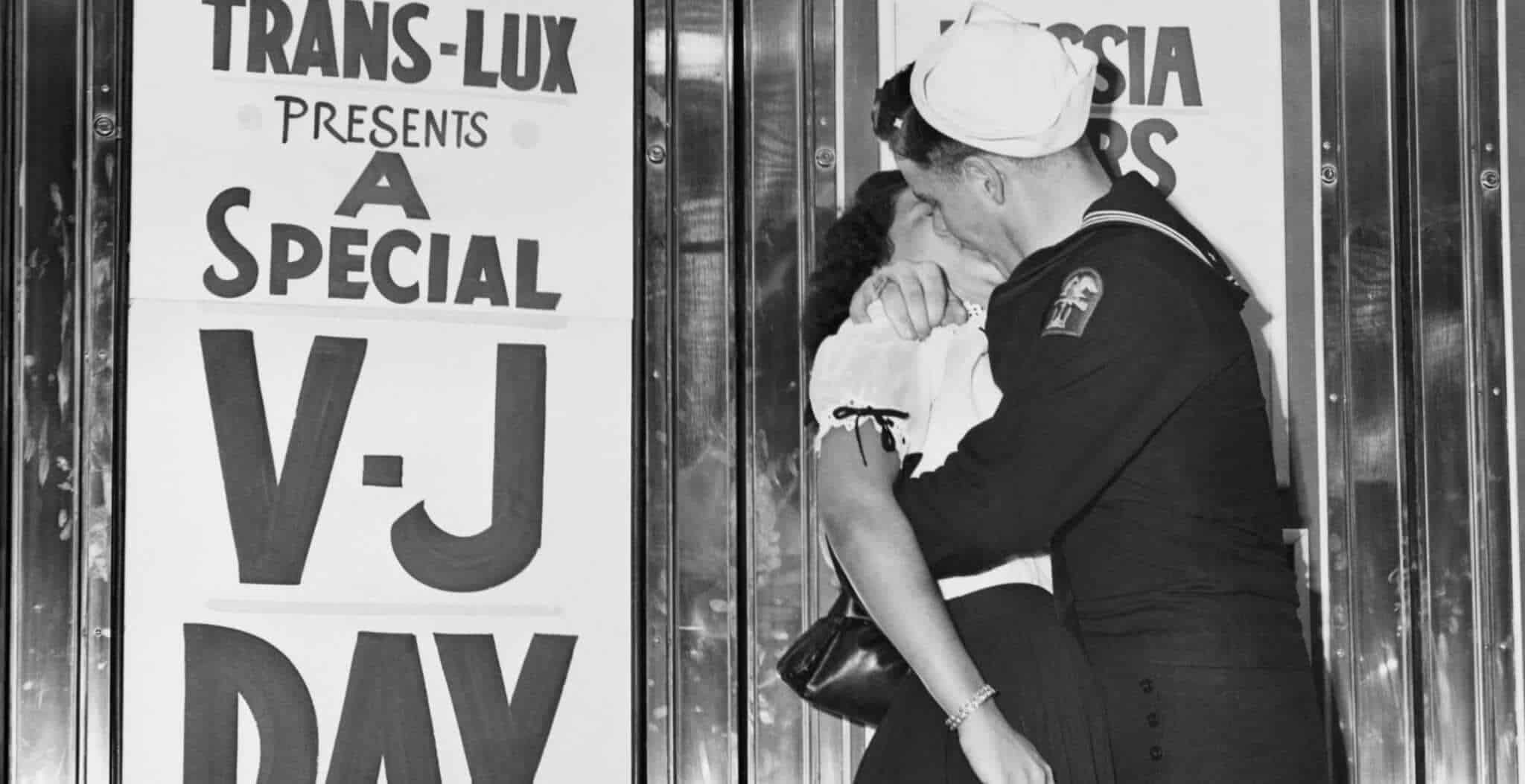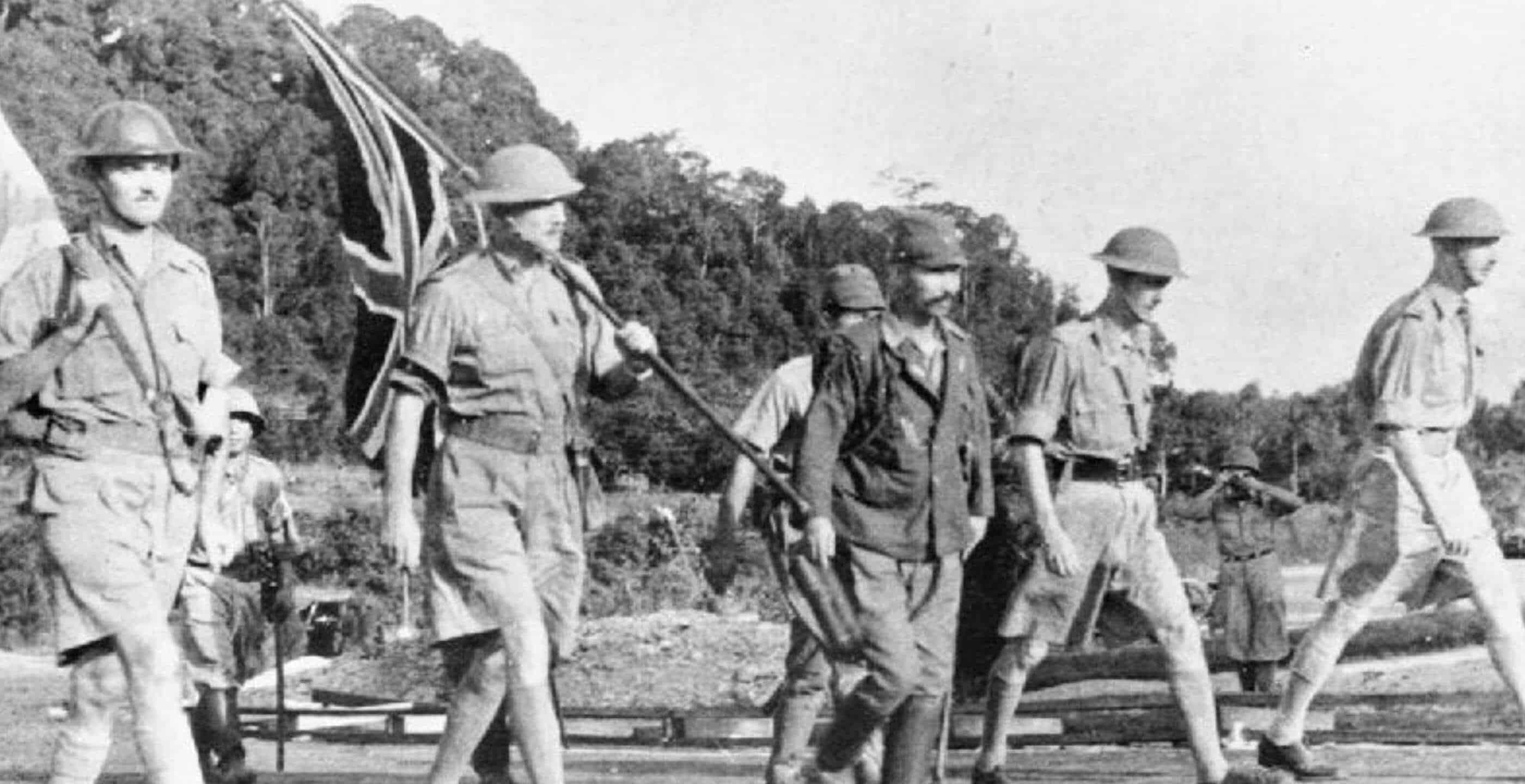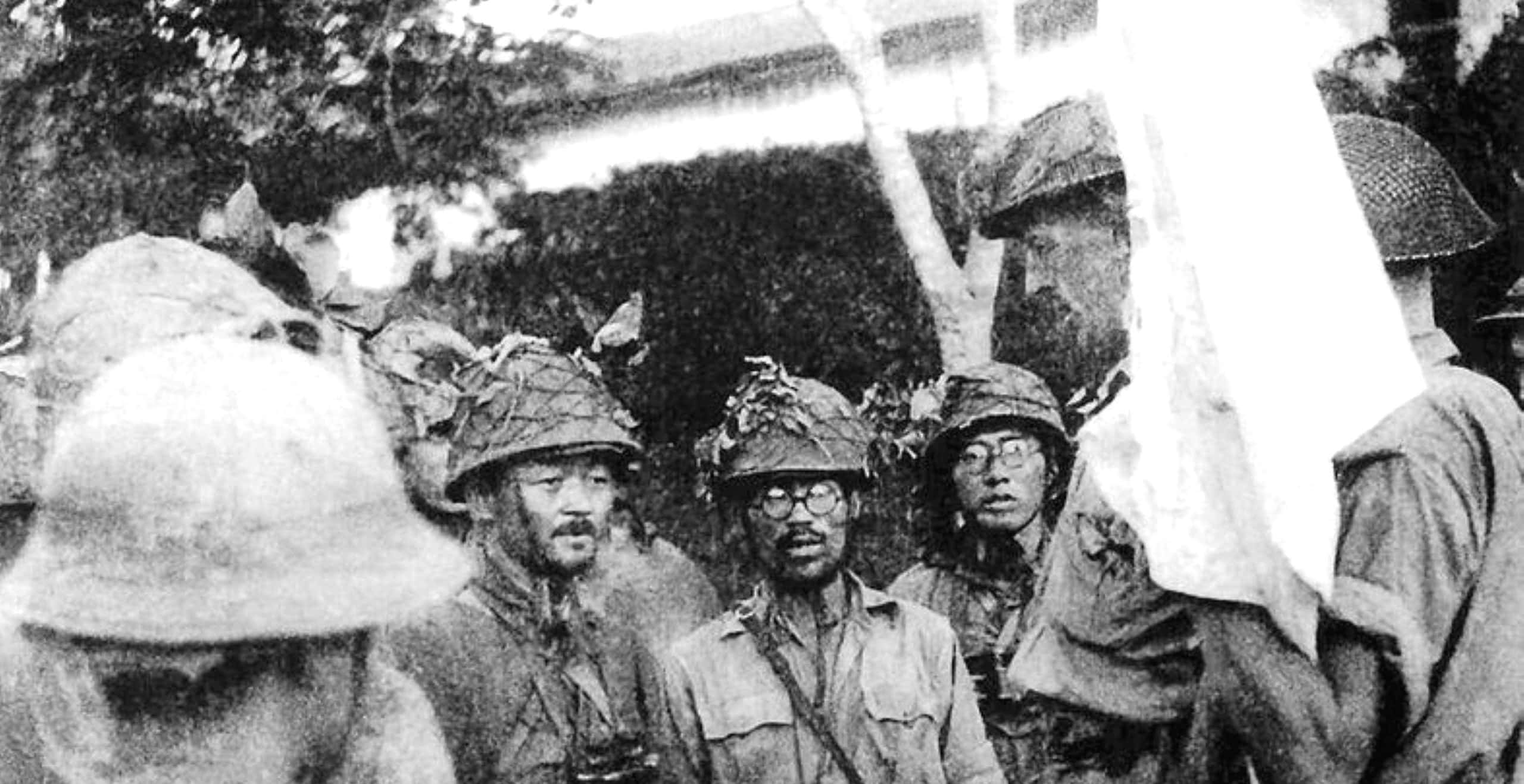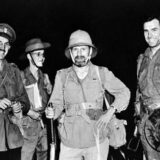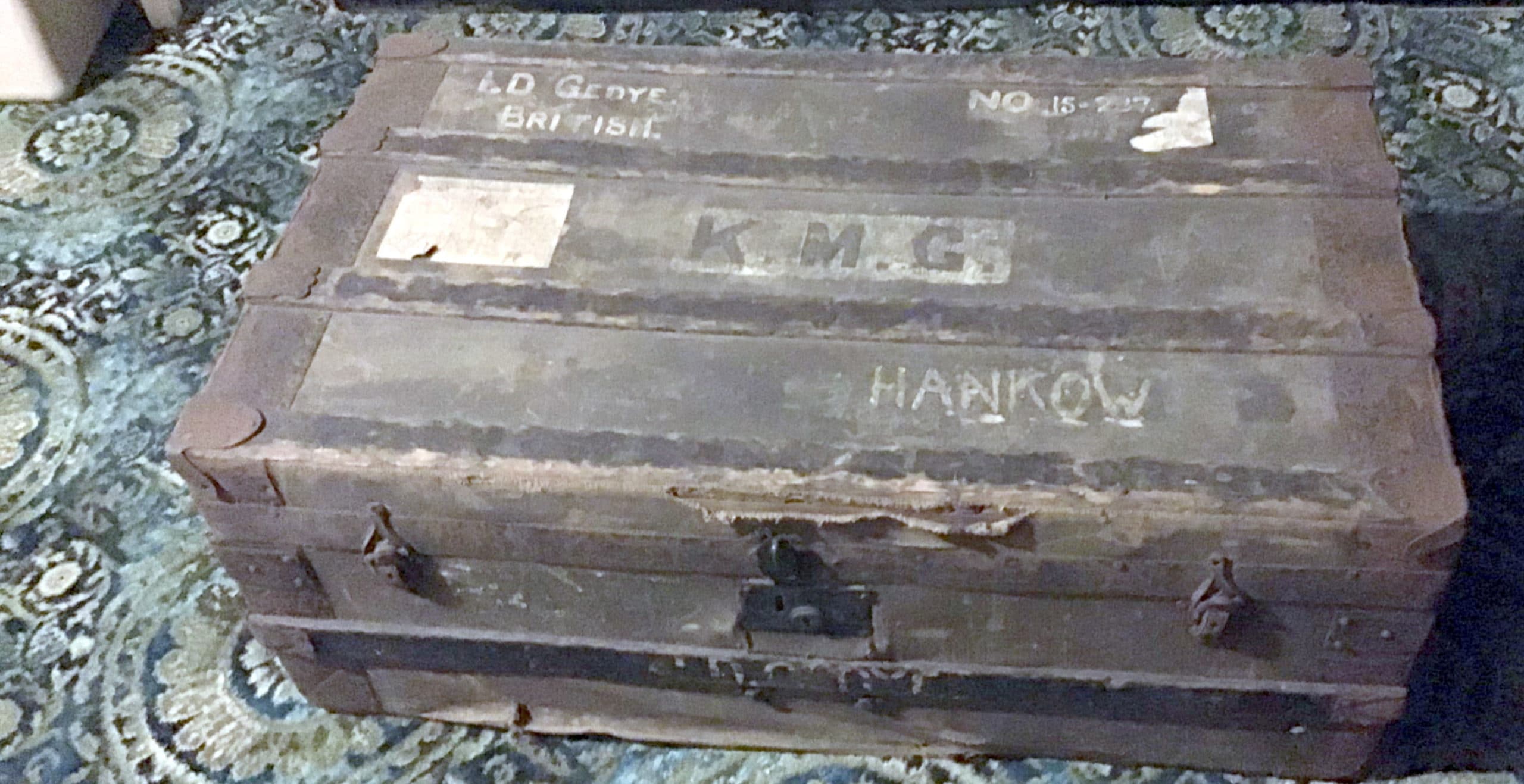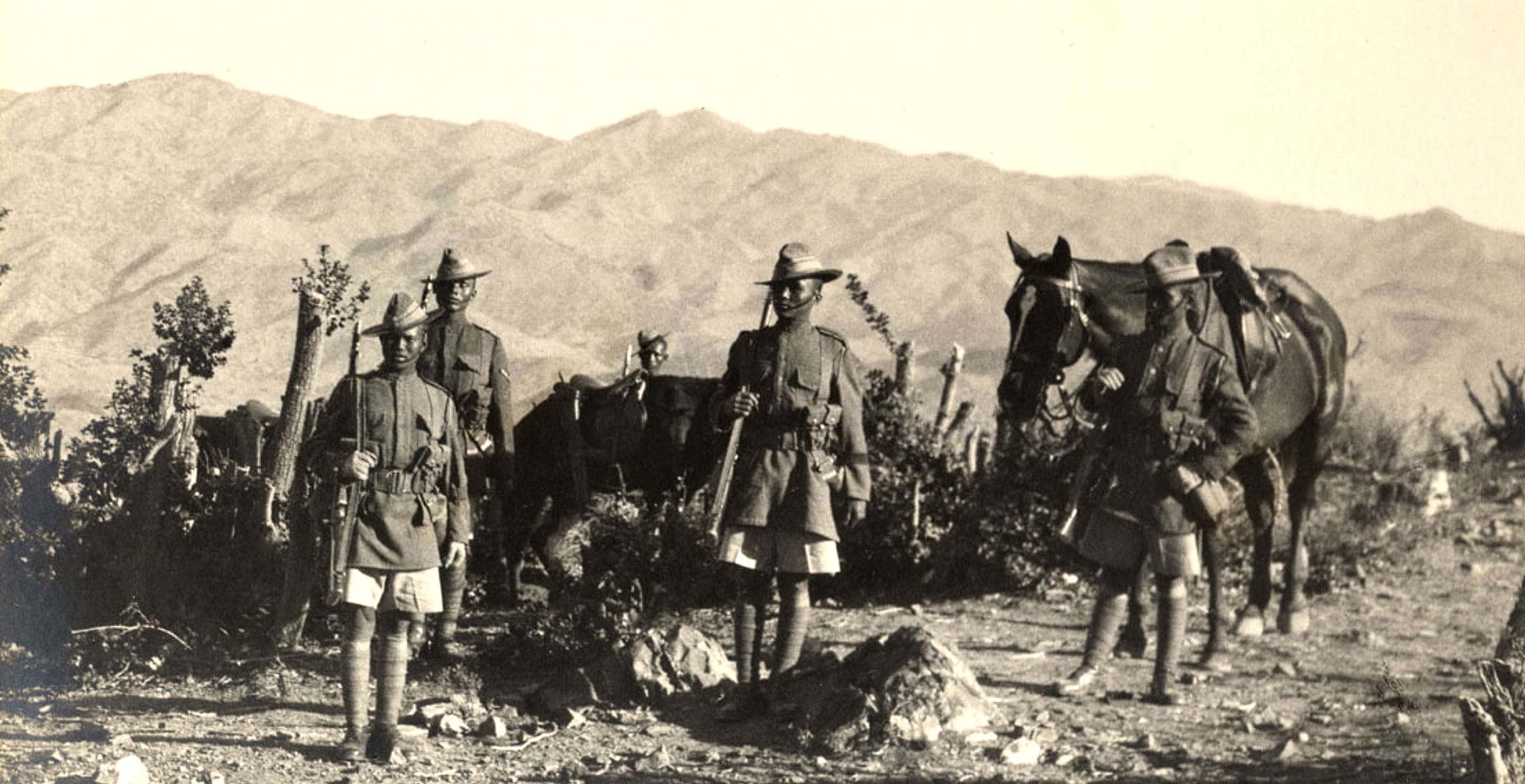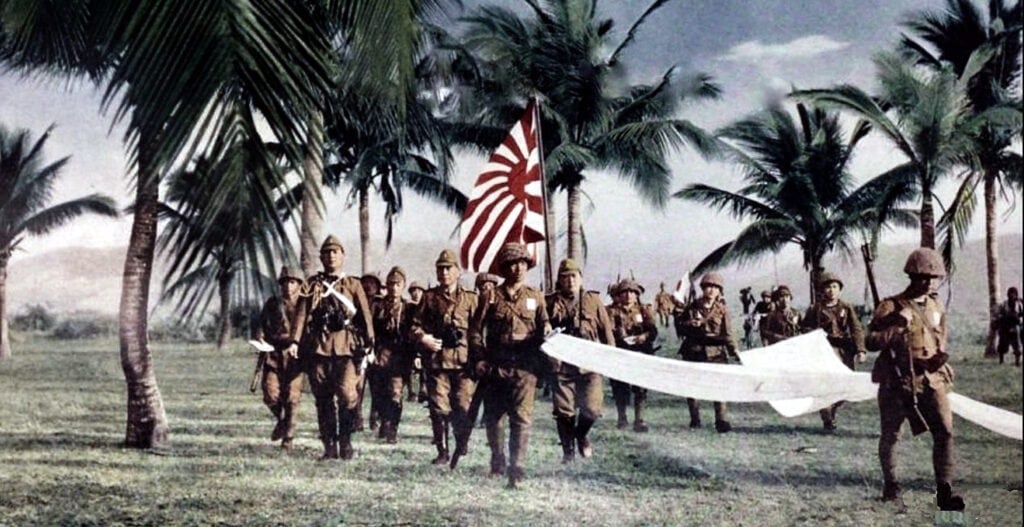During the Second World War, the battlegrounds of Europe dominated the headlines, however theatres of war could be found far and wide outside of the continent, particularly in Asia where men fought battles often overlooked.
One of the most significant forces to engage in these battles was the British Fourteenth Army, sometimes referred to as the ‘Forgotten Army’ in reference to its lack of coverage and recognition by the press at the time.
Commanded by Lieutenant-General William Slim, the Fourteenth Army was multi-national in nature and drew soldiers from across the Commonwealth nations, with a significant proportion of units from the Indian Army, as well as units from the West and East African divisions.
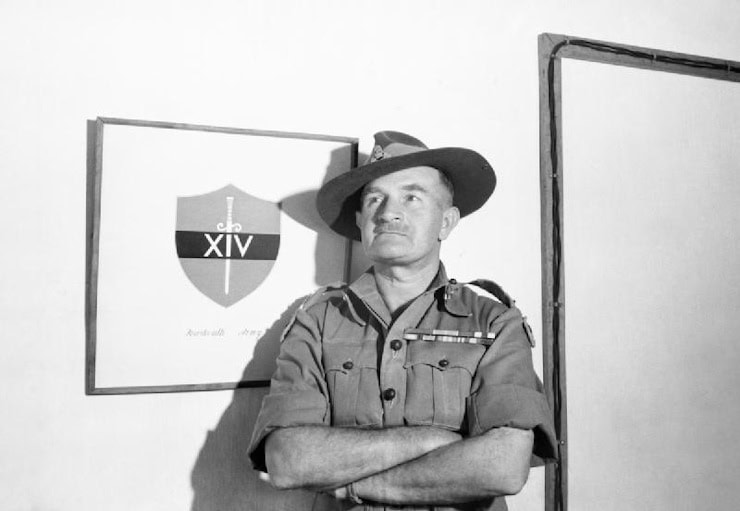 Lieutenant-General Sir William ‘Bill’ Slim with the insignia of the 14th Army behind him, 5th March 1945
Lieutenant-General Sir William ‘Bill’ Slim with the insignia of the 14th Army behind him, 5th March 1945
The international nature of the fighting force was itself not uncommon, as during the war many campaigns were fought by a combined effort of multi-national soldiers such as the Battle of Monte Cassino when Italy sided with Nazi Germany and the Allies launched their attack in 1943. As a result, the army which assembled included not only British and American soldiers, but also Indian, Free French, Polish, Czechoslovakian, New Zealand, South African, Nepalese, Canadian, Cypriot, Brazilian, Free Italian, Moroccan and Algerian. Moreover, their efforts benefited from the addition of the Royal Australian Airforce who worked in tandem with the soldiers during the campaign.
Meanwhile, in the same year, a South East Asia Command was created, headed by Lord Louis Mountbatten who served as Commander-in-Chief.
Prior to the outbreak of the Second World War, the British Indian Army had been organised along regional lines with its main headquarters based in New Delhi. During this time, Sir Charles Broad was head of the Eastern Command, which was later reorganised as the Eastern Army. Under its jurisdiction were the operations in Burma against the Japanese Army.
With the creation of the South East Asia Command, the Eastern Army was split and saw the reformed Eastern Command take over the rear areas of predominantly Bengal, Bihar and Odisha.
The Eastern Army was still responsible for the operations against the Japanese, whilst Lieutenant General Slim, who at the time was commanding the XV Corps was appointed to command the Eastern Army (subsequently known as the Fourteenth Army). By the end of the war it had grown to become one of the largest armies in the world and definitely the largest in the Commonwealth, with around one million men under command.

The efforts of these soldiers was paramount for the wider aims of the Second World War, however it was often overshadowed by events in Europe and received less press coverage during the war, as well as less recognition post-Second World War.
For this reason it has come to be known as the Forgotten Army, with a range of social, political and cultural reasons attributed to its lack of status.
Firstly, very early on in the war it had been agreed between the UK and USA that Europe was the priority and resources and military operations were to be concentrated in the region. This left the Far East as a secondary battlefield consideration, suffering from less funding, equipment and resources.
Moreover, the simple fact of geography meant that information exchanged between those serving in the Far East was slower to be received back home.
Press coverage was limited and few newspaper reports provided extensive coverage on events unfolding in Asia.
There was only one radio journalist, a man called Richard Sharpe who covered the Battle of Kohima: he remained for only a couple of days before returning home.
Another factor was the simple lack of victories which had been secured in the region, beginning with the fall of Hong Kong in 1941, and then Malaya a month later, followed by Singapore and then Burma in May 1942. As a result, British and Commonwealth efforts in the Far East appeared to be yielding few results and little strategic gain on the battlefield, whilst the Japanese continued to go from strength to strength.
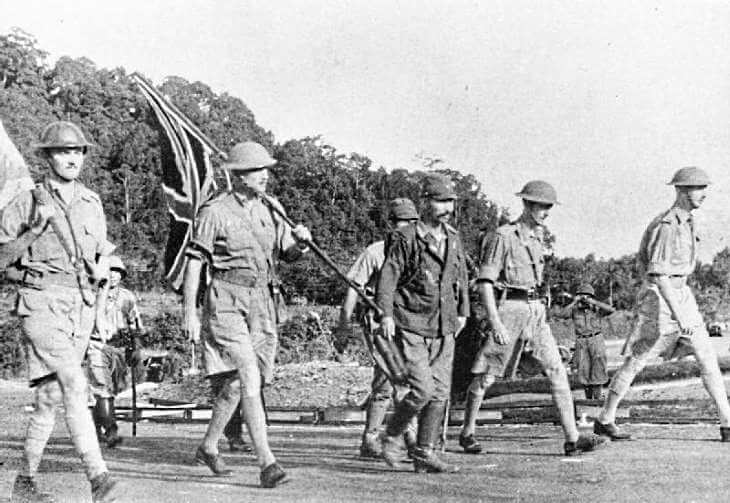
The bad news continued to feed back to Europe, contributing to the overall dejection and belief that the British wouldn’t be able to achieve success in India and Burma against the Japanese.
Nevertheless, this soon changed when in 1944 significant gains were made at the Battles of Kohima and Imphal, marking a turning point for the Fourteenth Army and the efforts of the Allied forces.
In the spring of 1944, the Japanese launched their offensive into India. Imphal and Kohima were decisive battles and the Fourteenth Army successes over the Japanese Imperial Army proved decisive in the region.
The success of the Fourteenth Army had proved to be remarkable as they were severely outnumbered by the Imperial Japanese Army but remained successful nonetheless, dealing a tremendous blow and numerous casualties for the Japanese in the process.
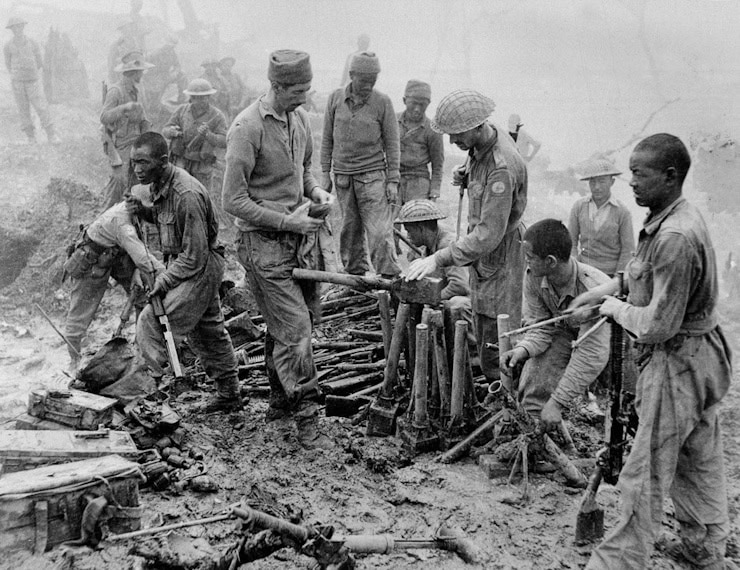 Indian and Gurkha soldiers inspect captured Japanese ordnance during the Imphal-Kohima battle, 1944
Indian and Gurkha soldiers inspect captured Japanese ordnance during the Imphal-Kohima battle, 1944
By the end of both battles, the Japanese had lost around 53,000 men, whilst the Fourteenth Army suffered 17,000 casualties. Many of the Japanese deaths were a result of a combination of factors including disease, starvation and exhaustion which they endured during their retreat.
From this point onwards, the Allied troops continued to advance on the Japanese and ultimately forced them out of Burma. The Fourteenth Army mounted the main offensive as the amphibious operations had been called off as a result of lack of resources.
The resulting Battles of Meiktila and Mandalay (also known as the Battle of Central Burma) saw the destruction of the majority of the Japanese units in Burma, thus allowing the Allies to pursue, with the Fourteenth Army advancing southwards.
Once the fall of Rangoon had been accomplished, Army headquarters were relieved of their operations in Burma and the Fourteenth Army HQ moved on to Ceylon for planned manoeuvres to recapture both Malaya and Singapore.
During this military recalibration, General Slim was promoted to command the Allied Land Forces in South East Asia whilst Lieutenant-General Miles Dempsey was placed in command of the Fourteenth Army.
Subsequently, Operation Zipper came into fruition, a codename for the seaborne campaign off the coast of Malaya. Whilst plans were interrupted by the atomic bombs at Nagasaki and Hiroshima which secured a Japanese surrender, Operation Zipper did still commence completely unopposed, thus allowing troops to enter Malaya and secure the Japanese surrender in this location.
On 15th August 1945, Japan formally surrendered and the last theatre of conflict in the Second World War came to a conclusion.
Three months later, the Fourteenth Army was renamed Malaya Command.
In the aftermath of war, the efforts of brave soldiers who came from Commonwealth countries across the globe was never fully recognised in the same way as returning soldiers from European battlefields.
In reality, the theatre of war in Asia had been brutal, complex and of the upmost strategic value in securing an ultimate and final declaration of Allied victory.
For many, their valour, efforts, sacrifices and fatalities became lost in a wave of euphoria which had echoed out of Europe in May 1945. The Fourteenth Army thus became the Forgotten Army.
Jessica Brain is a freelance writer specialising in history. Based in Kent and a lover of all things historical.
Published: 10th February 2023



